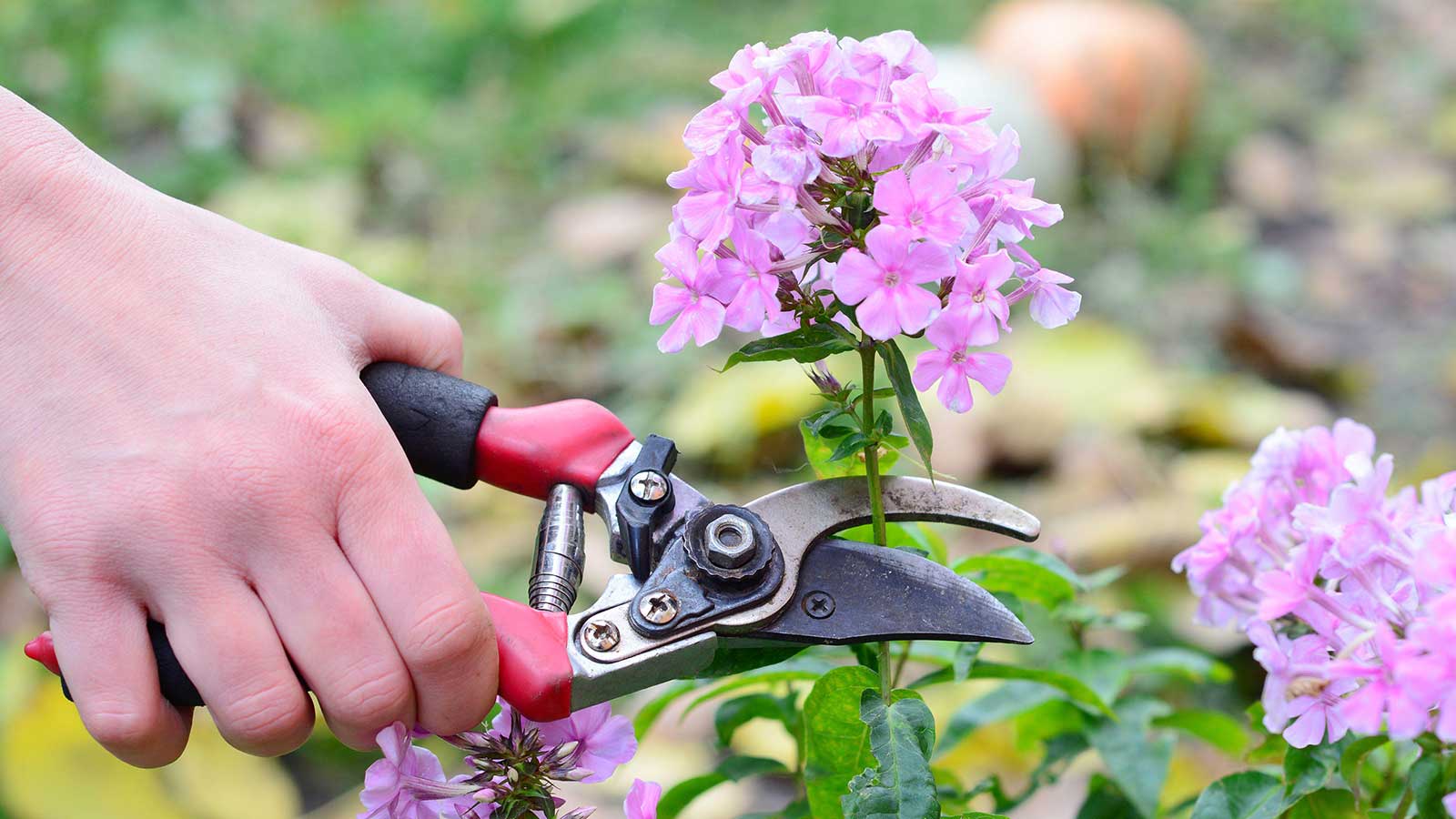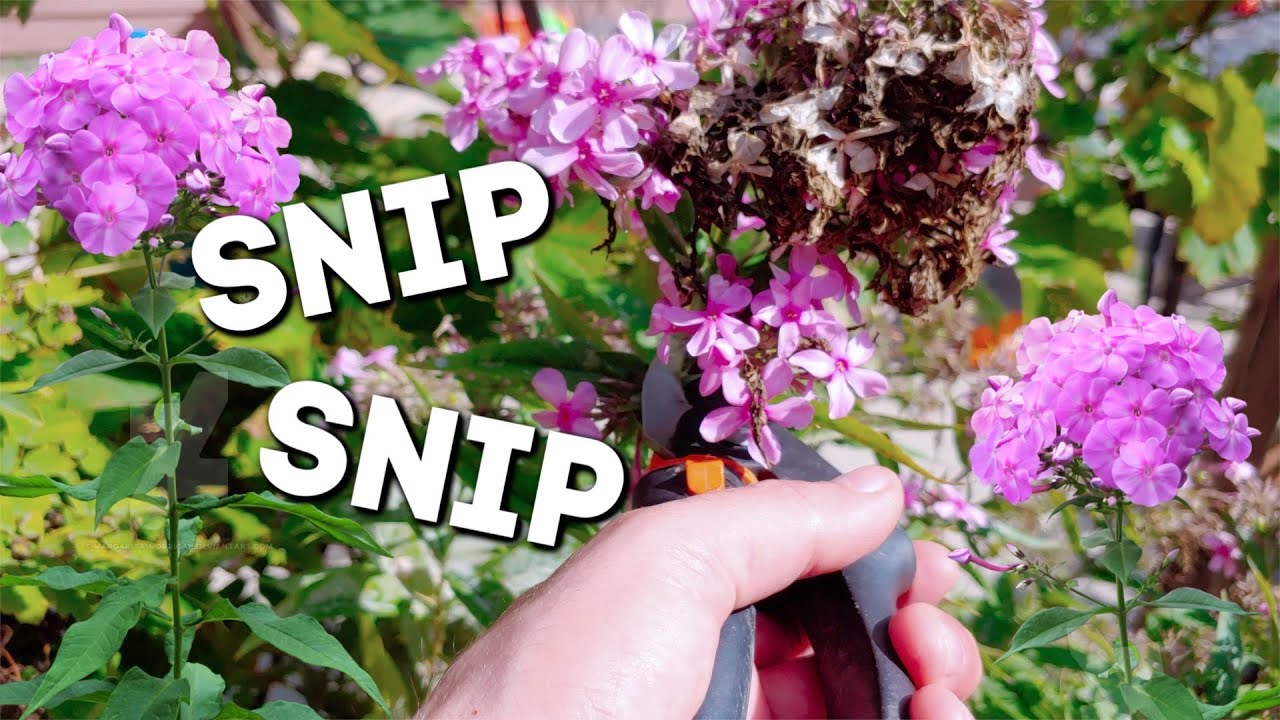Deadheading phlox is done by cutting off faded blossoms above the next set of healthy leaves, which will promote further growth and blooming. Phlox plants are known for their vibrant and fragrant flowers, making them a popular choice for gardeners.
To ensure that these lovely blooms continue to flourish, deadheading is an important maintenance task. Deadheading is the process of removing faded blossoms from the plant to encourage new growth and additional flowering. By cutting off the spent blooms just above the next set of healthy leaves, the plant will direct its energy towards producing new buds rather than producing seeds.
This simple act can greatly extend the blooming period of phlox and keep your garden looking fresh and vibrant throughout the season. We will guide you on how to properly deadhead phlox to maximize its beauty and longevity.

Credit: www.homesandgardens.com
What Is Deadheading?
Deadheading is the process of removing spent flowers from a plant. This involves cutting back the flower stem to encourage the plant to produce more blooms.
Definition and explanation:
Deadheading helps redirect the plant’s energy from seed production to the growth of new flowers. By removing spent blooms, you prevent the plant from putting energy into developing seeds, which can result in more and larger flowers. It also helps to tidy up the appearance of the plant by removing brown and withered flowers.
Benefits of deadheading:
Deadheading not only promotes continuous blooming throughout the growing season but also improves the overall health and appearance of the plant. It stimulates the plant to produce more flowers, extends the blooming period, and encourages stronger and healthier growth. Additionally, deadheading can prevent self-sowing and keep the plant from becoming invasive. Regularly deadheading your phlox plants will keep them looking attractive and enhance their longevity in the garden.
When To Deadhead Phlox
Deadheading phlox is a crucial garden task to encourage continuous blooms. Simply remove the faded flowers regularly to promote new growth and vibrant blossoms.
Timing and frequency
Deadheading phlox flowers is an essential maintenance task that can help promote continuous blooming and prevent self-seeding. It is best to deadhead phlox plants as soon as the blooms start to fade or deteriorate. By doing so, you can encourage the plant to redirect its energy towards producing more new flowers. The frequency of deadheading depends on the growth and blooming habit of the specific phlox variety. Some varieties may produce new blooms every few weeks, while others may only require deadheading once or twice throughout the season.
Signs to look for
To determine when it’s time to deadhead phlox, look for wilted or faded flowers on the plant. These can be easily distinguished from the vibrant, healthy blooms. Additionally, you may also notice the appearance of developing seeds in the faded flower heads. Deadheading before the seeds fully mature can help redirect the plant’s energy towards producing more flowers instead of setting seeds. Regularly inspecting your phlox plants and removing any faded blooms will not only enhance the plant’s appearance but also prolong the overall blooming period.
How to Deadhead Phlox: Step by Step Guide
Deadheading is an essential task to promote new growth and prolong the blooming period of your phlox plants. Follow these step-by-step guidelines to deadhead your phlox successfully:
- Gather the tools needed: All you need is a pair of clean, sharp pruning shears or scissors. Make sure they are sanitized to prevent the spread of diseases.
- Identify spent flowers: Look for faded, withered flowers on your phlox plant. These are the blooms that need to be removed.
- Position and cut: Locate the first set of healthy leaves below the spent flower, and carefully position your pruning shears just above this set of leaves. Make a clean, angled cut to remove the entire flowerhead.
- Continue deadheading: Repeat the process for all faded flowers on your phlox plant, working your way around the plant.
- Dispose of the flowers: Collect the removed flowerheads and discard them, preferably in a compost bin.
By regularly deadheading your phlox, you will encourage more blooms and ensure a stunning display of colors throughout the growing season.
1. Preparation
Gather all necessary tools and materials beforehand to effectively deadhead Phlox plants. Having the right equipment ensures a smooth and efficient process. Here is a list of items you will need:
- Pruning shears or bypass secateurs
- Gloves to protect your hands
- Bucket or bag for collecting the dead flower heads
- Optional: Disinfectant spray or rubbing alcohol
Make sure your pruning shears or bypass secateurs are sharp and clean. Dull blades can damage the plant, while dirty tools can spread diseases. If you choose to use disinfectant spray or rubbing alcohol, remember to clean your tools before and after each use.
2. Identify Spent Blooms
Deadheading Phlox is an essential task to maintain a healthy and aesthetically pleasing garden. One of the key steps in deadheading Phlox is to identify spent blooms. Recognition of spent blooms is crucial to differentiate them from the healthy ones. By doing this, you can ensure that you are removing only the flowers that have faded and passed their prime.
When identifying spent blooms, look for signs such as wilted petals, browning edges, and a drooping appearance. These are indicators that the flower is no longer in its peak condition. Additionally, check for flowers that have lost their vibrant color or have started to develop seed pods. These are clear signs that the bloom has reached the end of its lifecycle.
It is important to note that not all flowers on a Phlox plant will fade at the same time. Therefore, regular inspection and recognition of spent blooms are necessary to keep the plant looking healthy and encourage further blooming. By deadheading Phlox correctly, you can promote new growth, extend the flowering period, and maintain the overall beauty of your garden.
3. Pruning Technique
When it comes to deadheading phlox, it is important to follow the proper pruning technique. The correct angle and position for pruning will help avoid any damage to the plant.
To deadhead phlox, locate the spent flowers and trace the stem down to the first set of healthy leaves. Using a pair of sharp, clean pruners, carefully make a cut just above the set of leaves, ensuring a clean and angled cut.
Avoid cutting into the stem too close or leaving a long stub, as this can lead to damage and disease. By removing the spent flowers, you encourage new growth and promote a healthier plant.
4. Dispose Of Spent Blooms
Properly disposing of spent blooms is essential to maintain the health of your phlox plants and prevent the spread of diseases. When deadheading phlox, it is important to follow these proper disposal methods:
- Remove the spent blooms: Using clean and sharp pruning shears, cut off the faded flowers just above a healthy leaf or bud. This will encourage new blooms to grow and maintain the appearance of the plant.
- Collect the removed blooms: Place the removed blooms in a bag or container, making sure to seal it tightly to prevent any diseases or fungi from spreading.
- Dispose of the blooms: It is recommended to throw away the collected blooms in a sealed bag in the regular trash. Do not compost or mulch the spent blooms as this can encourage the growth of diseases.
By diligently practicing these proper disposal methods, you can effectively prevent the spread of diseases and ensure the continued health and beauty of your phlox plants.
Tips For Successful Deadheading
Deadheading phlox is an essential technique for promoting healthy growth and abundant blooms. Here are some tips for successful deadheading:
| 1. Timing: | Deadhead phlox immediately after the first bloom cycle to encourage a second wave of flowers. |
| 2. Tools: | Use sharp, clean pruning shears or scissors to make clean cuts and minimize the risk of disease transmission. |
| 3. Method: | Cut spent flowers just above a leaf node or lateral bud to encourage new growth and prevent bare stems. |
- Regularly water your phlox to keep the soil moist but not waterlogged.
- Provide adequate sunlight for at least 6 hours a day for optimal growth.
- Apply a balanced fertilizer during the growing season to support healthy blooms.
- Avoid over-fertilization as it can lead to excessive foliage growth at the expense of flowers.
- Delaying deadheading, which can result in reduced flower production.
- Using blunt or dirty cutting tools, increasing the risk of damage and disease.
- Trimming too close to the main stem, potentially harming the plant.
- Underwatering or overwatering, both of which can negatively impact phlox health.
Frequently Asked Questions Of How To Deadhead Phlox
How Do You Deadhead Phlox?
Deadheading phlox involves removing the spent flowers to encourage new growth and prolong blooming. Simply cut the faded flowers back to a bud or leaf junction using shears or scissors. Be sure to remove any yellowing or damaged leaves as well.
Deadheading regularly throughout the summer will help to keep your phlox looking tidy and producing new blooms.
Conclusion
To ensure healthy and vibrant blooms, deadheading phlox is a fundamental task for every gardener. By removing spent flowers, you not only improve the plant’s overall appearance, but also encourage new growth and prolong blooming season. Don’t forget to prune faded stems back to a set of healthy leaves or lateral blooming branches.
With a little care and regular deadheading, your phlox will continue to dazzle with its beauty throughout the season. Happy gardening!

